An unusual succulent, Senecio rowleyanus, or String of Pearls, has long vines with nearly spherical leaves cascading from it's stem.
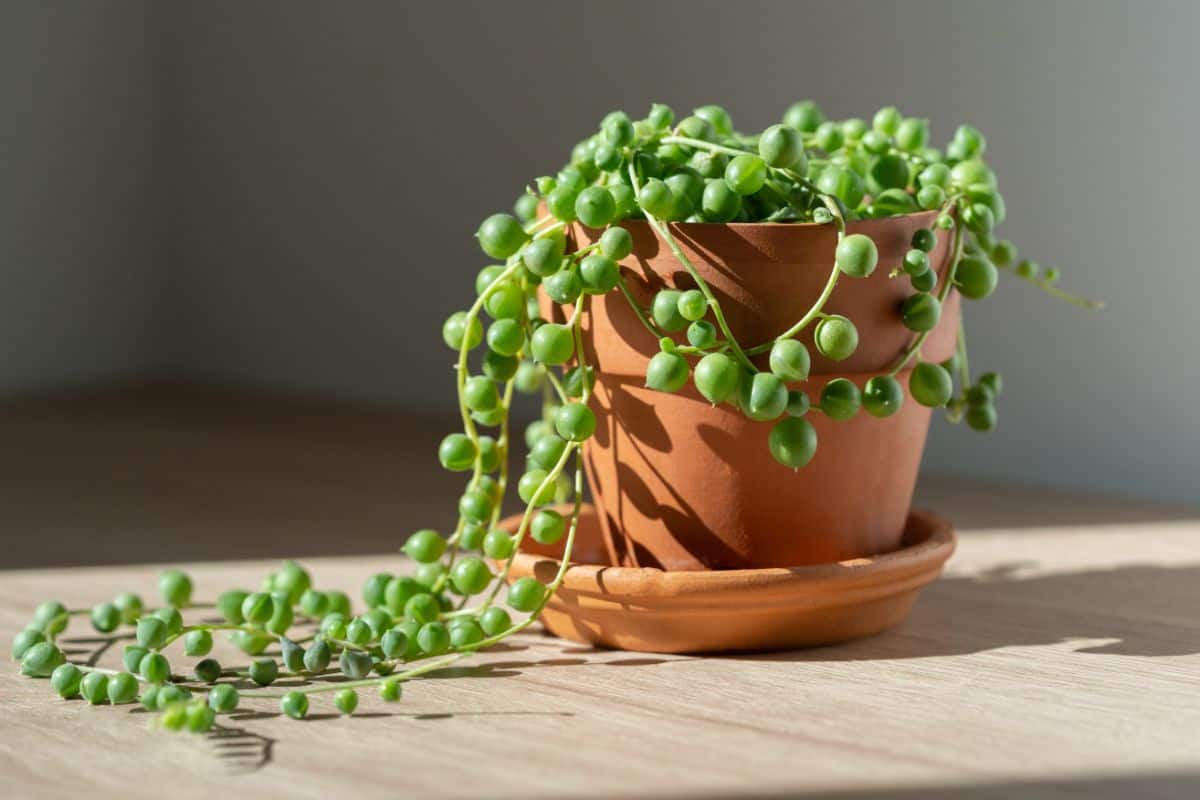
It is an eye-catcher and conversation starter! The multiple masses of trailing stems with almost perfect spherical beads every few inches are very cool to see. Plus, it's fun to say that you have multiple strings of pearls on your plant stand.
See Also: Zebra Cactus
Jump to:
String of Pearls Backstory
| Name: | Senecio rowleyanus |
| Soil: | Well-drained soil |
| Blooming: | Late spring through to summer |
| Light: | Bright, indirect light |
| Water: | Soil to dry out between waterings |
| Propagation: | Stem and leaf cuttings |
This native African species was discovered by British botanist Gordon Rowley. While originally classified in the Senecio genus, it has recently been moved to the Curio genus and is part of the daisy family. It grows naturally in the hot dry areas in the eastern part of the Cape of South Africa.
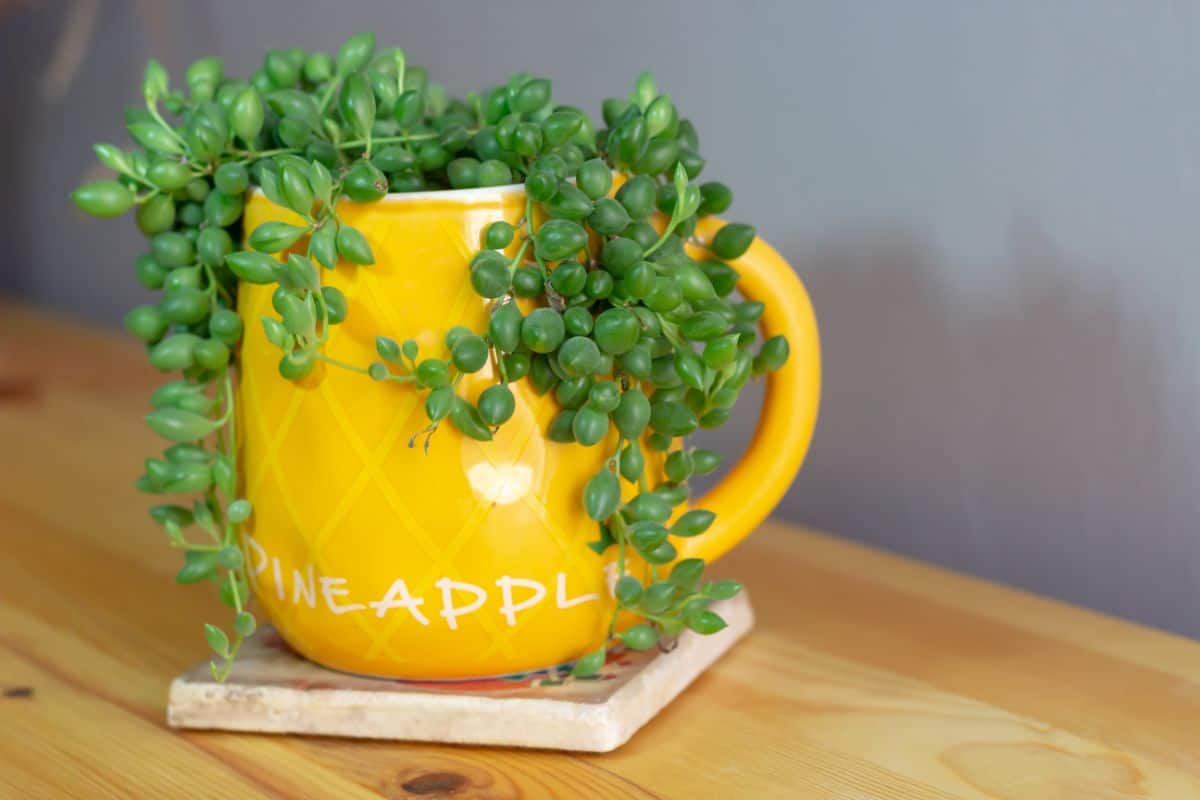
The surface roots of this plant are weak and don't need much soil to get started. They produce long, elegant, string-like, trailing stems, up to 3 feet long. They can produce dense mats that cover the ground as their stems take hold wherever they touch the soil.
In their natural environment, they stretch out and cover the ground like a thick carpet. To protect themselves from the intense, hot African climate, this succulent often grows and winds it's way around rocks or between bushes to gather whatever shade they can.
Their spherical leaves, the size, and the shape of small peas are used to hold water. Each leaf has a narrow dark green stripe down its side and a pointed tip at the end, creating an unusual and spectacular display of uniform almost perfectly round beads.
Hence, the name, String of Pearls! The circular nature of the leaf reduces the surface area exposed to the hot desert sun. This minimizes water evaporation, which is a vital adaptation for anything living in the desert!
See Related Reading: Ruby Plants Nursery - Interview
String of Pearls Flowers
The String of Pearls produces ½ inch compound flowers that are conical and similar to a daisy. They are white with bright yellow anthers and long red stamens and will last for about a month.
Their scent is rather unexpected, most often being described as similar to cinnamon. They have quite a pronounced and unusual sweet and spicy fragrance, that's for sure.
See Also: Jade Plant Care
A Perfect Hanging Basket Plant
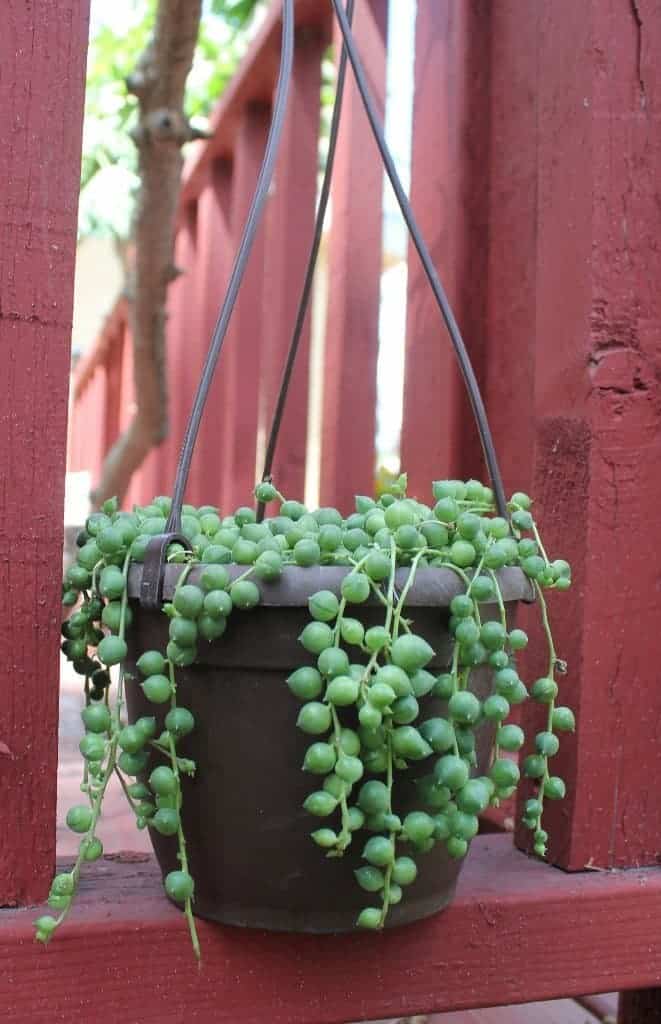
This succulent does well being grown and displayed in a hanging basket so that the stems can cascade down the sides, showing off its gorgeous pearl shaped beads.
No products found.
They also can be grown in a flat dish, mimicking more their natural environment, allowing the stems to stretch out or curl around your growing container.
String of Pearls Care
The String of Pearls, as with most succulents, don't need much in the way of care. They need bright light, infrequent watering, and well-draining soil.
See Also: Planet Desert Online Succulent and Cactus Store Review
Potting and Soil Requirements
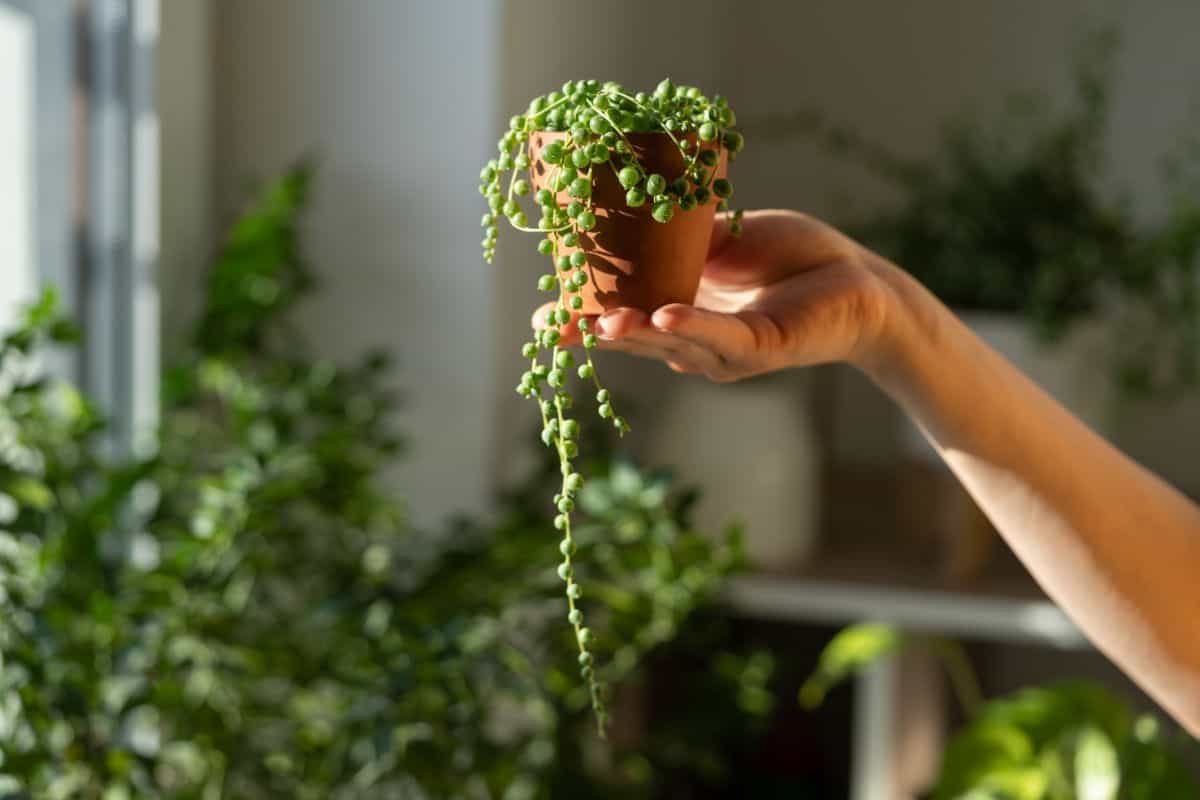
When you pot these succulents, as with all succulents, use a quality, well-draining soil mix with some inorganic materials added, such as small pea gravel, sharp sand or pumice, up to a 1:1 mixture. The most common reason for this plant not thriving is root rot, caused by over-watering.
If you want to make your own soil, look no further! Here's everything you need to know about soil.
When choosing a planting container, clay or terra cotta is the best choice since it encourages evaporation. Avoid plastic containers; the soil in plastic containers tends to dry out slower.
The potting soil should dry completely between waterings to prevent any problems.
They are happy to be planted in a shallow container since their root system is also shallow.
Read Also: Succulent Gardens Online Succulent Nursery Review
Sring of Pearls Succulent Watering Requirements
A good rule of thumb is to water your succulents about once a week (when they're not dormant in the winter). However, many String of Pearls owners finds that these guys can be a little more thirsty than other fat plants.
So here's a pro tip:
- The best indication that your string of pearls needs watering is that the leaves will start to look a little shriveled. Don't wait until they're completely shriveled though, as that might be too late! Just when you see a little shriveling, get out the watering can.
- If you find after a few weeks that your new store-bought succulents leaves are turning yellow and shriveling up and its stems are disappearing, then root rot has already taken hold and there isn't much that can be done.
- You can try removing all the dead and dying bits and expose the plant to light and air and maybe, just maybe, it can be revived. Fingers crossed!
Check Also: Rose Succulent Care
Light Requirements of String of pearls
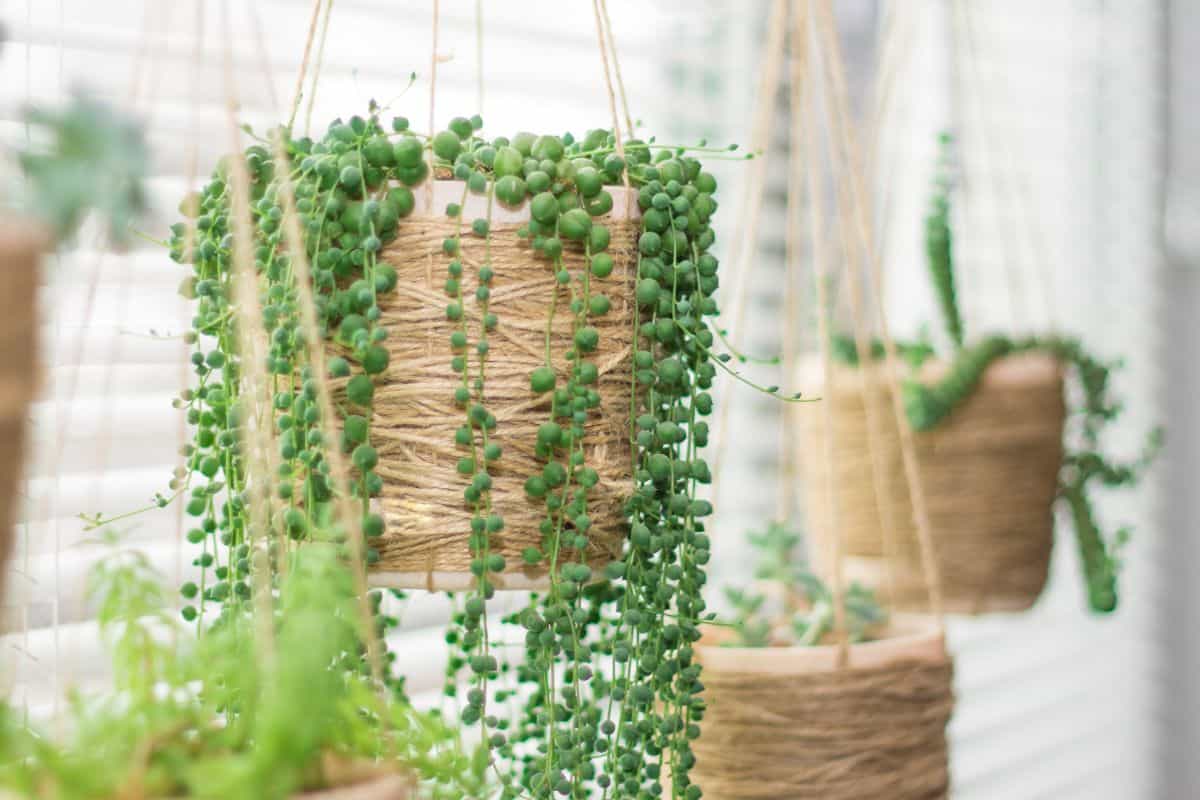
We've talked about how, in their natural habitat, String of Pearls hangs out in or near the shade. You should strive to emulate this in your house, too.
They can certainly tolerate direct light, but you'll find your Pearls will thrive if they're in bright, indirect light.
I know, bright and indirect light sounds like an oxymoron, but it is achievable! Try a south-facing window, or a grow light.
Sring of Pearls Succulent Pests
Thankfully, these succulents rarely have pest problems. They are slightly toxic to humans, though. Yikes! If the leaves are ingested, they may cause vomiting or diarrhea.
Also, the plant's sap can cause a rash or skin irritation. So, be careful if you have sensitive skin.
If you do find too many bugs, here's an article that talks about common succulent pests and how to treat them.
Propagating String of Pearls
The best way to start a String of Pearls plant is by taking a cutting. If you have a friend with one, ask nicely for a cutting... or steal one when they're not looking.
To propagate String of Pearls, carefully take 3-4 inch stem tip cuttings. Remove any leaves from the bottom of the cutting and put it on potting soil, lightly covering the bottom few nodes.
Roots will develop quickly at the nodes and your succulent will be on its way to becoming a beautiful plant. Until the roots are established, you should only water with a mister to prevent over-watering.
It can also be propagated via leaf (or bead, pearl, whatever). It's much like other succulents - simply drop a leaf on soil and wait.
This method is more unreliable and takes much longer though, so avoid it if you can.
Read Related Topic: 10 Interesting Facts About Succulents
Buy String of Pearls
If you are buying your first String of Pearls succulent from a store, be cautious because their propensity to die out from over-watering can be a problem you are inheriting unknowingly.
In many stores, the sales associates don't pay the closest attention to each plants' needs and therefore don't always wait until the soil is completely dry before watering. Ugh!
This, in addition to the majority of them being sold in plastic hanging baskets, to show off their long pearly strings, means the water is not evaporating as well as it should.
It's hard to tell if this is the case when you are at the store, but a good rule of thumb is to only buy String of Pearl plants with mostly dry soil.
These guys also ship fairly well. There are lots of reputable online stores, too. Here are some of our favorites.
If you're having trouble finding these popular plants in stock, there's always Amazon. Or, if you'd prefer to support the little guys, Etsy has loads of options.
If you can get a cutting of this plant, it is a wonderful addition to your home succulent garden. The long stems with their almost perfectly round beads are absolutely beautiful and amazing addition to your plant family.
What succulents do you like to put in arrangements with String of Pearls? Tell us in the comments!


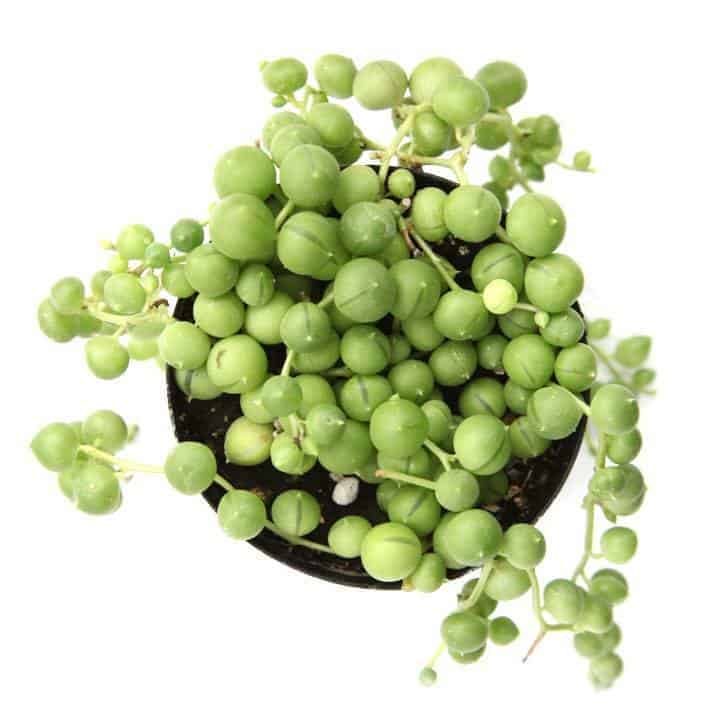
Annie
I love String of Pearls, and so when I made a Fairy Dress based on a Succulent pattern by Pamela, in the bodice of the dress cage I placed a mixture of Jewel Succulents with String of Pearls. I found that, like you said, the String of Pearls needed more watering than the other guys. If I watered the Pearls the Jewels suffered. If I didn't water the Pearls, they got puckered and dry. I have taken to spraying the surface of Pearl's soil, as they adjust in. I'm trying my best not to touch or joggle. Any suggestions for this?
Patrick Grubbs
That sounds like a beautiful arrangement!
Unfortunately, it's pretty hard to have a thriving arrangement with different types of succulents. There isn't a great way to balance the water needs. Spraying isn't very effective either, it doesn't get water to the roots well. It's unlikely you'll be able to satisfy everybody :/
Chelsey
Hello!
I have had my string of pearls plant for over a year now, and I love it! it has grown so long since I bought it. The only thing is, many of the new pearls that have grown are quite small. How do I get them to grow fatter like the ones at the top?
Should I be watering more? I put fertiliser in each time I water.
Should I trim some of the longer strands so that the plant focuses more on fattening up rather than growing long?
Patrick Grubbs
Hey Chelsey!
In my experience, they're pretty sensitive to water. If what you're doing right now doesn't kill them, it's best to keep it up haha. I would recommend, however, that you fertilize less often. Most succulents only want to be fertilized a few times a year. You could accidentally burn them!
As for fattening the pearls, I think it's mostly about how much light they get while they're forming. They do continue to grow over time, though. Some pruning may also encourage them to focus growth up top - give it a try!